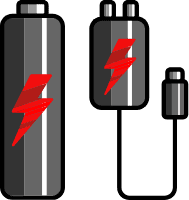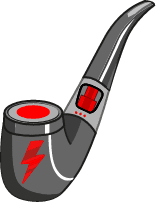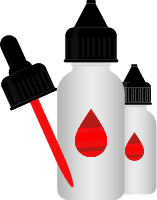TPD and Regulation about the vape world
3 anss ago / by Master Vape / 3 mins read
 The TPD (Tobacco Product Directive) is a European regulation that governs all tobacco products. It is the result of a long process of reflection and has existed since 1989. Since then, it has undergone several revisions.
The TPD (Tobacco Product Directive) is a European regulation that governs all tobacco products. It is the result of a long process of reflection and has existed since 1989. Since then, it has undergone several revisions.
Since 2014, as a result of lobbying and pressure at the highest level orchestrated by the tobacco industry (Big Tobacco), vaping products have also been included. The directive concerns all countries belonging to the European Union, which are free to apply all or part of the recommendations at the time of national transposition.
The key point to remember is that the UK, which has just left the EU, has long promoted vaping as a harm reduction and cessation tool. And of course, Her Majesty's Kingdom has a much better record on tobacco control than France and other European countries.
TPD 2014
Despite protests and numerous actions throughout Europe, the 2014 TPD still came into force in France two years later. Since then, different regulations have been put in place regarding vaping:
- Safety and quality standards for all products.
- Mandatory labelling of e-liquid ingredients.
- Rules for the protection of children, with the obligation to install safety caps for each bottle.
- A ban on advertising and the obligation to display health warnings.
- A mandatory declaration of new products on the market.
- A limit of 2 ml for atomiser tanks and 10 ml for nicotine e-liquid vials.
- A 20 mg/ml limit on nicotine content.
If the introduction of rules concerning quality and safety standards was rather a good thing for the consumer (although restrictive for manufacturers), others were pure nonsense without any justification. The first of these ? The 10ml vials, which really do generate a lot of plastic pollution. Secondly, the 2ml capacity limit for atomisers inevitably forces the consumer to refill more frequently and more laboriously.
As for the advertising ban, it is surprising that it does not also apply to patches and other chewing gums that also contain nicotine. And yet they were carefully excluded from the directive so as not to offend the powerful pharmaceutical industry. In fact, it has been known for many years now that vaping is a much more effective and permanent way of quitting smoking.
Although this first PDT has already dealt a serious blow to the vape industry, a new version is now in preparation.
The SCHEER Report
At the request of the European Commission, a scientific committee was commissioned to conduct a study on tobacco products - including vape. From this, the famous SCHEER Report (Scientific Committee on Health, Environmental and Emerging Risks) was born with the aim of re-evaluating the TPD guidelines.
A public consultation for all European citizens was opened until the end of October 2020, but as some feared, its forthcoming impact and effect on decisions seem to be anecdotal, if not non-existent. The recently published 117-page report presents worrying, largely anti-vape-oriented findings that raise fears of a tightening of legislation :
- Questioning the effectiveness of smoking cessation.
- Gateway to smoking for young people.
- No proven health risks.
- Demonisation of flavours.
These conclusions have caused the various pro-smoking organisations and associations to jump up and down, pointing out the many serious scientific studies that have been carried out, and dismantling point by point all of the report's arguments. After more than ten years of vape's existence, the lack of necessary hindsight can no longer be used as a pretext, the figures speak for themselves:
- Number of annual deaths in France attributed to smoking: 73,000
- Number of deaths in the world attributed to vape since its existence: 0
It is also important to put certain things into context in this regard. For example, it is important to remember that the EVALI crisis, which caused a wave of deaths at the end of 2019 in the USA, was caused by the use of adulterated e-liquids containing E-acetate. The sharp criticism and incisive, even revolting and shameful communication, carefully orchestrated by Big Tobacco, had tried to blame this terrible episode on vape. However, logically, this has since been disproved.
What's next ? The TPD 2021
The European Commission has stated that it wants to follow the conclusions of the SCHEER report and the astonishing position of the WHO, which considers vaping to be "unquestionably harmful", ignoring all the studies and reports demonstrating the opposite. We can therefore expect a tightening of the regulations, to be published this year, which will be applicable from 2022.
Possible changes include :
- Limiting all bottles to 10ml, whether nicotined or not.
- Limiting or banning certain flavours
- Application of pharmaceutical legislation as a smoking cessation aid
- Addition of a tax on all vape products
And in the meantime, it's hard to know what kind of meal vape enthusiasts will be eating...




 E-LIQUID
E-LIQUID E-LIQUID
E-LIQUID E-LIQUID
E-LIQUID E-LIQUID
E-LIQUID E-LIQUID
E-LIQUID E-LIQUID
E-LIQUID LITTLE
LITTLE MEDIUM
MEDIUM LARGE
LARGE FRENCH
FRENCH ENGLISH
ENGLISH AMERICAN
AMERICAN CANADIAN
CANADIAN MALAYSIAN
MALAYSIAN












































































































































 BASE
BASE
 BOOSTERS
BOOSTERS
 ADDITIVES
ADDITIVES  ACCESSORIES
ACCESSORIES  DIY CALCULATOR
DIY CALCULATOR 



















 ACCUS & CHARGERS
ACCUS & CHARGERS  PYREX & TANKS
PYREX & TANKS  DRIP TIPS
DRIP TIPS
 BOXES & MODS
BOXES & MODS RESISTANCES
RESISTANCES  RESISTANCE WIRES
RESISTANCE WIRES  COTTON
COTTON  TOOLS
TOOLS PETIT NUAGE
PETIT NUAGE
 MOYEN NUAGE
MOYEN NUAGE
 GROS NUAGE
GROS NUAGE










































































 BOXS & MODS
BOXS & MODS MODS & BOXS
MODS & BOXS E-PIPES
E-PIPES
 RTA
RTA
 RDA
RDA
 RDTA
RDTA




























 TOP COMPLETE KITS
TOP COMPLETE KITS  TOP BOXS & MODS ELECTRO
TOP BOXS & MODS ELECTRO
 TOP MODS & BOXS MECA
TOP MODS & BOXS MECA
 SIMPLE
SIMPLE

 ADVANCED
ADVANCED EXPERT
EXPERT
 POD CARTRIDGES
POD CARTRIDGES  TOP
RECONSTRUCTIBLE ATOMIZERS
TOP
RECONSTRUCTIBLE ATOMIZERS  TOP CLEAROMIZERS
TOP CLEAROMIZERS  TOP DRIPPERS
TOP DRIPPERS
 TOP E-LIQUIDES
TOP E-LIQUIDES 




































 COMPLETE KITS
COMPLETE KITS  BOXS & MODS
BOXS & MODS
 CLEAROMIZERS
CLEAROMIZERS  RECONSTRUCTIBLE ATOMIZERS
RECONSTRUCTIBLE ATOMIZERS 

 MATERIAL PROMOTIONS
MATERIAL PROMOTIONS  E-LIQUIDS PROMOTIONS
E-LIQUIDS PROMOTIONS  DIY PROMOTIONS
DIY PROMOTIONS 







Leave a Reply Cancel Reply